“Nobody reads ads. People read what interests them. Sometimes it’s an ad.” – Howard Gossage
The art of ad copy is everywhere—from Times Square billboards to that pamphlet you picked up on the street, and most importantly, everywhere you look while you’re browning online.
And if you’re like us, you understand that knowing your way around written words is usually what makes or breaks your ability to sell online.
But like a fine wine or a tantalizing cheese, there’s a format for every palate and occasion—or every digital advertising platform in this case. And in our agency, we have experience with most.
In this article, we’ll cover the ins and outs of different ad copy formats, showcase some examples from our own kitchen, and provide some tips, too. Yep, it’s gonna be fun!
What Is Ad Copy?
Ad copy is copywriting in its most crucial form.
You have to choose words that are persuasive—but not intrusive, captivating—but not misleading, calling into action—but still letting your audience make the decision.
And it comes in many forms. It can be just leading the audience to click that “buy now” button, or maybe signing up for your email workflow, or simply discovering more about your product.
It’s the secret sauce that makes your brand stand out in the noisy marketplace. A powerful tool that turns heads, opens wallets and leaves a lasting impression.
In essence, ad copy is the storyteller that turns curious minds into loyal fans.
Ad Copy Formats: Conversion In Different Forms
In advertising, conversion takes on various shapes and sizes. And it all starts with knowing and leveraging different ad copy formats.
Here are some of the basics:
- Social ad copy is succinct and compelling.
- Search ad copy is often short-form, requiring keyword-rich precision.
- Video ad copy focuses on visually captivating storytelling.
- Native ad copy blends with the content and format of the medium, making it appear more natural
They are the core ad copy formats so let’s take a look at each.
Social Ad Copy
Social ad copy is the art of condensing a compelling message into a bite-sized nugget that fits seamlessly into users’ social media feeds.
Since social ads rely on platforms’ advertising networks, server-side tracking, and machine-learning algorithms, you can craft different copies depending on your target.
Plus, they usually tag along with compelling ad creatives that blend with the news feed.
These short and snappy copies are designed to stop the endless scroll or swiping, pique curiosity, and encourage immediate engagement—being a like, comment, or a click–through.
✍️ The crucial thing about social media copy is that it needs to feel native to the platform.
Search Ad Copy
Search ad copy is concise, informative, and crafted to incorporate relevant keywords and phrases that you’ll bid on.
The main goal is to appear when users search for specific queries.
A search ad copy should answer those particular keywords lead the users to click on the ad and ultimately direct them to a product, service, or solution that meets their needs.
✍️ Search ad copy is designed to appear as an organic search result at the top of the search results page. The more “organic” it looks, the better the click-through rate.
Video Ads Copy
Video ad copy differs from regular text copy in many ways. It’s the captivating script, voiceover, and text that drive your video advertisements.
Think of it as the persuasive backbone of your video content—while you’re the scriptwriter. Plus, video ad copy has a bright future.
Meta acknowledges that 82% of all online media in the future will be video in a recent report, with 52% being short videos.
This means that producing video ads that fall in between these platform videos will be a skill that’s highly sought after.
🎥 With video ads, every second counts. Especially the first three—which are usually make or break when it comes to capturing attention. Focus most of your effort there.
Native Ads Copy
At its core, native ad copy camouflages within its environment. It mirrors the look and feel of the platform it’s on, whether it’s a social feed, a news site, an email newsletter, or similar.
This type of copy feels like it belongs. It respects the user’s experience and seamlessly integrates into their content journey, with a small annotation that it’s actually a paid placement.
People engage more with native ads than traditional display ads. Why? Because when done right, they don’t feel like ads at all!
Ad Copy Formats, Frameworks, and Some In-House Examples
First, let’s clear the difference between ad copy formats (or frameworks), and types.
Formats usually refer to how you’ll map out your copy. What you emphasize, from which angle will you approach the problem, will you tell a story or go straight to the point, etc.
Types of copy can be specific to your brand or the way you’ll frame your copy depending on your product.
Most ad copy types can be put in any format (or copy frameworks) and still work.
Ad Copy Format Examples
So let’s check out some of the most popular formats or frameworks first.
The AIDA Framework
Attention, Interest, Desire, Action. Possibly the most timeless tool for modern marketers.
Snag the reader’s focus with a captivating hook, whether it’s a striking headline, a gripping opening, or a compelling image.
Once they’re hooked, fan the flames of curiosity. Explain the problem your product solves or tout its benefits. Then ignite desire by showcasing your product’s unique selling points and features.
Finally, you’ll the deal with a crystal-clear call-to-action (CTA).
The PAS Framework
Problem, Agitation, Solution.
What this framework does is it hones in on the customer’s problem, stirs it up, and serves up the solution.
PAS excels at pinpointing problems, evoking emotions, and presenting clear solutions. While it’s not one-size-fits-all, it’s a dynamo for products targeting specific issues. For example:
- Problem: Struggling to shed those extra pounds?
- Agitation: The frustration of failed diets and exercise routines, the feeling of hopelessness in the face of persistent weight gain.
- Solution: Our weight loss program is your ticket to lasting success. With personalized guidance and proven methods, you’ll achieve your dream body, boosting confidence and vitality.
Simple as!
The BAB Framework
Also known as before-after-bridge.
This copywriting powerhouse comprises three vital elements:
- Before state: Picture your current situation, the nagging problem that keeps you up at night.
- After state: Now, imagine the sweet relief of your improved life, free from those worries.
- Bridge: Our solution, the path to turn those dreams into reality.
This ad copy format is super effective when you have a clear pain point or a problem that your audience is experiencing.
Likewise, you might want to avoid it if it doesn’t offer any clear benefit or solution—because the “after effect” trigger won’t work that well.
The APP Framework
Awareness, Problem, Positioning.
Begin by building awareness of a pressing issue, like work-induced stress. Highlight the problem’s detrimental effects on productivity and mental health.
Then, swoop in with your solution, your product or service, shining a spotlight on its benefits and unique features.
How we advertised a New Year’s offer for a Hawaiann water back in 2018
The 4Ps Framework
Picture, Promise, Proof, Push. This is where simplicity meets effectiveness.
Engage customers by vividly illustrating your offering, promising them a transformative experience, validating with real-world proof, and compelling them to act now.
This framework can be quite compelling but requires a persuasive story.
Ad Copy Types
Now let’s see the different ways we can appeal to different audiences and emotional states using nothing but words.
Here are the different ad copy types we use to boost conversions.
1. Appeal to Rarity
By nature, we like to stand out. People collect rare items and love feeling that they snatched something that isn’t easily obtainable.
For example, if your product has a limited collection or if it’s easily sold out, you can always appeal to rarity.
2. Appeal to Exclusivity
Make your customers feel like they’re exclusively invited or a part of an exclusive group.
For our agency, this type of ad is particularly effective for lead generation before a big sale season, where you can ask for people to opt-in your email to get special discounts, on top of the existing ones.
And that’s just one of many potential use cases
3. Appeal to Scarcity
Fear of missing out (FOMO) is one of the biggest angles used in today’s ad copy. Simply because it works so well—people just hate missing out on limited-time deals.
Make a big sale, bound it by date, and watch the sales soar.
For instance, any copy that starts with “Limited time offer—” will appeal to scarcity.
Testimonial Ad Copy
You must’ve heard about social validation and the impact it has on brand awareness and trust.
For that reason—especially when targeting customers in the later stages of their journey—you can give them a little social proof nudge.
Don’t be afraid to quote user reviews in your ad copy, especially if your ad is user-generated as well.
Influencer Ad Copy
It’s still social proof, but they ain’t your regular users. In fact, influencers have a huge reach, and a trusting fanbase, and–if you nail them right—you might just hit the ad jackpot.
But how to frame influencer ad copy?
If you’re running ads from your page, then you might want to quote them or refer to them in third-person. If you’re whitelisting or using a third-party page, then try to speak in first-person.
Here’s how we do it for one of our clients:
PR Ad Copy
Another one that can fall into the social proof bracket.
If your brand was listed in a renowned publication when it comes to your niche or a global publishing powerhouse, make sure you have an ad or two that showcases it.
Here’s a throwback to a great ad copy we did for a client a few years back:
That’s some PR list!
Novelty Ad Copy
If your target audience are disciplined, meticulous group who love innovations and streamlining their workflows, then you can lean into novelty ad copy.
By doing so, you’ll emphasize on state-of-the art features of your product.
For example, “a revolutionary design that [makes a feature better] / [solves a pain point].”
Free Shipping Copy
The oldest trick in the book.
The bottom-of-the-funnel users need just a little nudge as they’re already hot for your product. That’s where free shipping comes in because, who doesn’t love free shipping?
Of course, try not to be too generous if your margins are low as you don’t want to lose money. That’s why this ad type and ad copy are beneficial for bigger average order values or higher-ticket items.
Feature-Packed Copy
The copy type is where you just want to list features but frame them in a way that will help your customer.
This usually helps during the decision-making process in the middle of the funnel.
“Get this easy-to-clean foam play mat for your children which makes spills and spit-ups super easy to wipe and keep your home looking beautiful.”
You’re already telling your customers that they’ll have less trouble with the item while it also has a decorative purpose.
Analogy Ad Copy
A favorite of ours, analogy is when you compare your product with something else, not necessarily related.
People love analogies because we’re associative creatures and love to connect the dots in our minds.
So if you say that your sunglasses are the “Rolls Royce of eyewear,” you’re basically appealing to your customers’ desire for luxury and positioning your sunglasses as such.
Think about your target audience well before you start connecting the said dots.
Appeal to Purity
Everyone wants to feel good—and wear, use, or ingest something pure that will make them feel that way.
So if you’re selling such a product, make sure you frame your copy in a way that will make your customers feel good about owning or consuming it.
⚕️Important: If you’re talking about health or similar benefits, make sure you word your copy as such not to make any definite claims. Otherwise, your ads might get flagged.
Appeal to Special Affection
Every product has aficionados, especially if it’s a niche.
And those customers want to feel like they’re topmost fans of the said product type. If it’s wine, you’ll do well to promote your wine as the one all top sommeliers would die just to taste.
But it’s not only effective for food and beverage products, but also collectibles, luxury items, pieces of furniture, apparel, or anything that has a dedicated fanbase.
Appeal to Positive Emotion
Sometimes, you customers just want to feel good about themselves.
And that’s all you need to include in your ad copy, especially when you aren’t selling an essential item.
Here’s a simple example of how we did it for a client. This short, simple copy conveys that positive feeling and is one of the better-performing ads we had for the client in years.
Ad Copy Best Practices
Now that you’ve seen which ad copy types work in practice, make sure you know how to replicate it—and in which circumstances.
But consider these universal tips as well.
- Headlines. The first impression is everything. Craft compelling headlines that capture attention immediately. If it’s a video, add a headline in the video thumbnail.
- Know who you’re addressing. Speak their language. Address their needs. If you’re in tune with your audience, your ad copy will resonate. Do your homework.
- Stay Concise. Get to the point. Fast. Time is precious; don’t waste your audience’s.
- Call to Action (CTA) is Key. What do you want your audience to do? Make it clear. ‘Buy Now’, ‘Learn More’, ‘Join Us’ – make that click irresistible.
- Benefits, Not Features. People don’t buy products; they buy better versions of themselves. Highlight how your product transforms or benefits them. Remember the famous “1000 songs in your pocket” from the iPod a long time ago? That’s how you do it.
- Consistency Across Channels. Whether it’s a native ad, social media ad, podcast ad, or newsletter ad…ensure your message is consistent. Cohesion breeds credibility.
- Test and Optimize. One size doesn’t fit all. A/B tests different versions. Measure, learn, adapt. Always have a separate budget for testing.
Keep these things at the back of your mind no matter how seasoned of a copywriter you are.
How to Get Better In Writing Ad Copy?
The road to becoming a worthy wordsmith is rocky. But, it can be mastered and perfected.
If you want to get better, here’s what our agency copywriting experts can advise you on…
Read Relentlessly
The best writers are voracious readers. From novels to billboards, consume words whenever you can. Don’t skip ads in your feed—they are your main source of inspiration.
Read your competitors’ ads and track how the big boys do it. You’ll glean rhythm, tone, and vocabulary and hone your skills in the process.
Practice Daily
Like any skill, writing improves with repetition.
If you’re not a copywriter by call, you should set aside time every day to try and craft, edit, and refine your copy.
Give yourself little tasks by recalling the different types and angles we’ve mentioned. How would you frame your ad if it’s a short video and how if you’re writing it for search engines?
So many choices…
Know Your Product Inside Out
To sell it, you need to own it and believe in it.
You’re the first who should understand which pain points your products solve, how it does that, and which objections will the first need to be handled.
If you’re not sure, conduct a little research within your network about your product. Ask people if they’d need it, how they’d use it—and what would stop them from trying.
This should help you dive deep into the product’s ins and outs.
Empathize with Your Audience
Who are you selling to?
Step into their shoes. Understand their pain points, desires, and dreams. Speak directly to them.
This will help you craft a branding voice that will resonate with your audience and make them stop and pay attention when they see your hooks.
Avoid Jargon
Unlike blogs and newsletters, ad copy should be it simple and concise.
But cracking a joke or a rhyme you believe your audience would understand is allowed.
A tasty beer and no hangover to fear (yes we made that up right now) is how you can make a catchy copy without complicating it.
In other words, if your grandma doesn’t get it, rewrite it.
Keep a Journal of Awesome Copy Examples
You’re already doing this, right?
If not, you better start. Whenever you see a copy that triggers your lightbulbs, note it somewhere.
If you’re a freelancer, have a separate doc just for that. If you’re an agency, keep creative and inspiring copy examples in your SOP for your copywriters—they’ll thank you. With an awesome copy.
Make sure you categorize the examples depending on the industry, on the type of promotion (if it’s BFCM season, for example… so you can navigate easily.
Never Stop Learning
Enroll in courses. Attend workshops. Join writer groups.
In any way, surround yourself with the craft. Try to follow people who are better than you and learn from their copy and their lessons.
Subscribe to copy newsletters, ask for advice, and if you’re in an agency—ask for feedback from other copywriters and even higher-ups.
Make joint efforts when writing, and collaborating on projects. This will all be of massive help.
Conclusion
As you see, ad copy seems simple, but it’s actually a complex process that requires continuous learning and skill development.
The better your copywriting skills, the more effective your ads will be. Meaning you’ll either sell more, or—if you’re working for clients—you’ll make them sell more. And thus, boost your worth as well.
So keep honing your copywriting and if you need any help with creating copy tailored to your target audience, make sure you reach out.
We can help make your life much easier. With words.

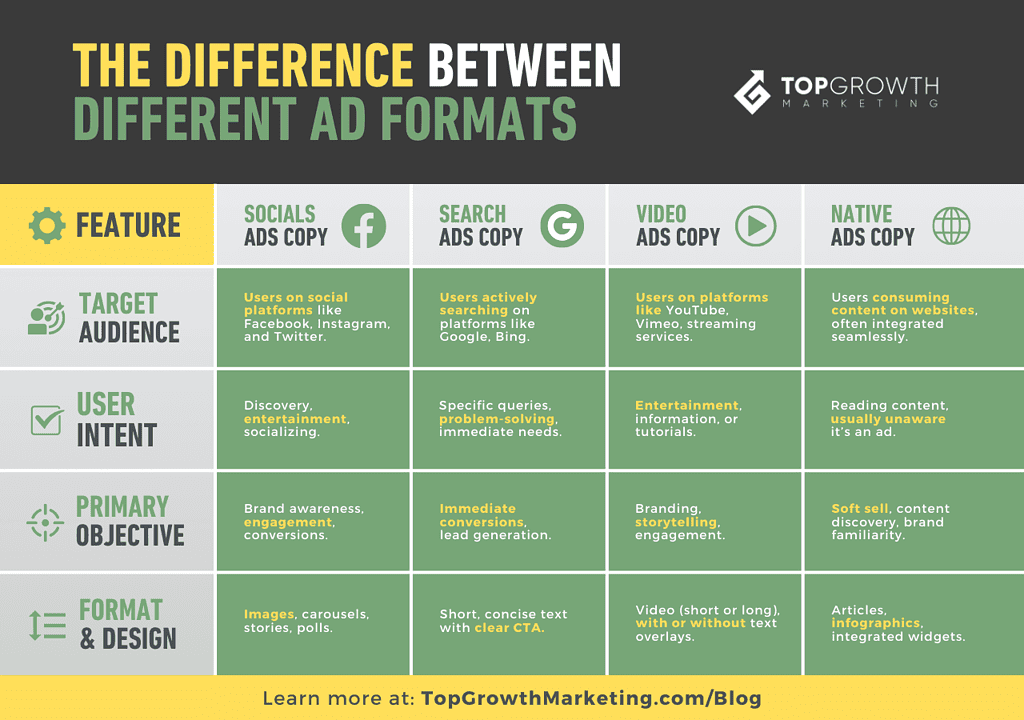



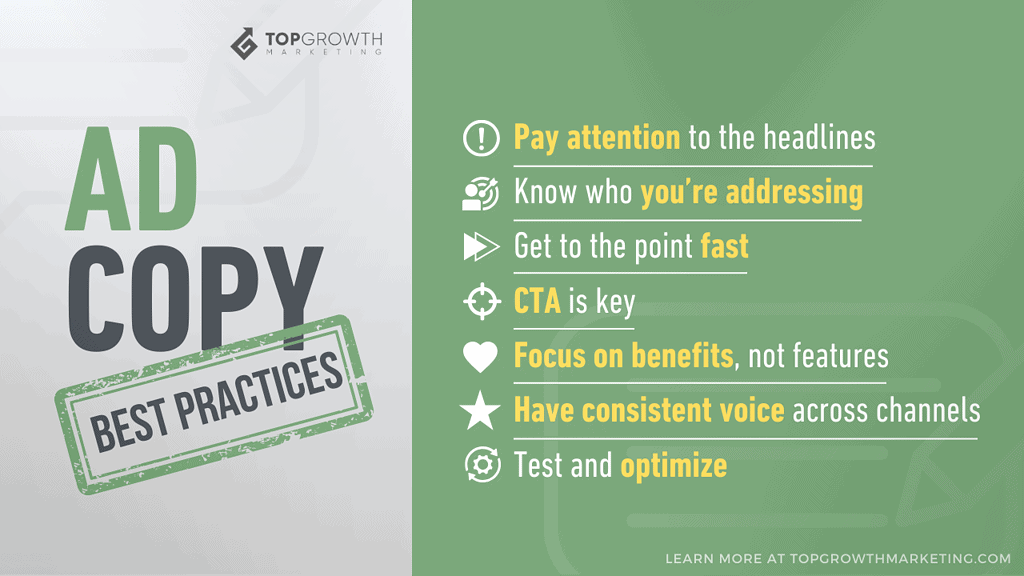

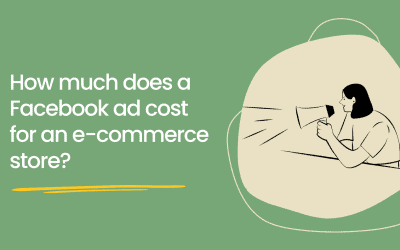
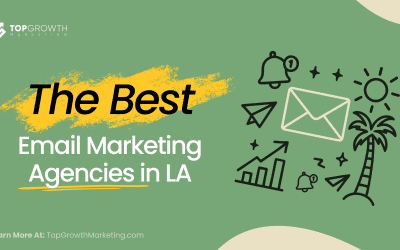
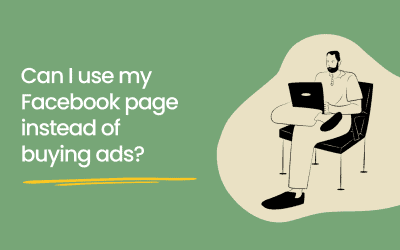
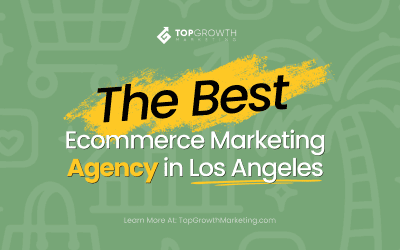
0 Comments